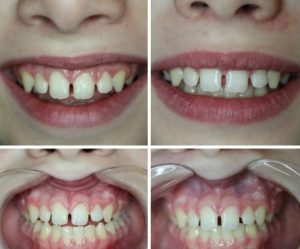What is Orofacial Myofunctional Therapy;
It's not tongue thrust therapy.
Read More: Orofacial Myofunctional Therapy | What is a Tongue Thrust
The field of orofacial myofunctional therapy (OMT) is growing at a rapid pace. Each year, more and more speech professionals are seeking education and incorporating therapy into their practices. It’s exciting to see the amount of new research available to support the role of OMT in the treatment of obstructive sleep apnea, sleep disordered breathing, ankyloglossia, and temporomandibular joint disorder. But as this emerging field spreads its wings, it’s important to revisit the foundation that this field is built upon.
What is the true purpose of the orofacial myologist?
Traditionally, orofacial myologists were thought of as tongue thrust therapists. It’s easy to see why. We do help to eliminate tongue thrusting, after all. But here is what we want our patients to know:
We are not tongue thrust therapists. Tongue thrusting is not the source of an orofacial myofunctional disorder. It’s just happens to be one of easiest symptoms to recognize.
If not tongue thrust therapists, then what?
When rest posture is altered, we see changes in both muscle function and craniofacial growth. Since the tongue thrust is merely a symptom of a change in tongue posture, we need to address the entire problem. We need to teach the muscle where to rest again.
The reason that rest posture is always more important than swallowing is simple: Teeth are moved by light, constant pressure, not by intermittent heavy forces. Only treating the intermittent heavy force created by tongue thrusting is not treating the source of the problem. This is why cribs and rakes typically do not work. They attempt to block the heavy force of swallowing, which, even when added up, only amounts to about 20 minutes a day. If the tongue is resting low and forward against the teeth and lips are parted for the other 23.5 hours, then we have not addressed the actual problem. The light, constant pressure of the tongue and lips have much more influence on oral equilibrium than tongue thrust ever will.
To gain a clearer understanding of the positive impact of proper oral rest posture, here are two cases that show the influence of tongue and lip position on occlusion and oral equilibrium:
Case A

This eight-year-old girl was referred to my office by her orthodontist. She presented with a low and forward tongue posture, a lip biting habit, and of course, a tongue thrust. Her lips were rarely sealed, and the lower lip was often impinged due to the severity of the overjet and anterior open bite. Oral rest posture therapy was completed in approximately five months. You can see in the center picture that teaching the tongue to rest on the palate and a proper lip seal had a significant impact on her overjet and open bite, even before orthodontic treatment. In the final picture, the patient has completed phase I orthodontic treatment. Because we were able to treat the source of the problem rather than just the symptoms, there has been no relapse of the anterior open bite.
Case B

This 11-year-old male was also referred by his orthodontist. He had a history of a thumb sucking habit until age nine, as well as seasonal allergies that caused mouth breathing, leading to a low tongue posture and lip incompetence. Although his full case took four months to complete, the changes observed in these photographs show the incredible amount of progress after just seven weeks of therapy. This is extremely significant, because during the course of a full rest posture therapy program, I do not begin to address the tongue thrusting habit until week eight or later. The changes shown here to the occlusion and lip appearance happen solely by addressing where the muscles rest and how well they function in isolation.

Evgenia Stefanaki, SLP, OM, has the private practice "All for Speech Center" and is a nationally certified and licensed Speech & Language Pathologist with specialization in orofacial myofunctional therapy. She writes on the blog about speech & language disorders and orofacial disorders.
If you want to share this article, click the buttons!

